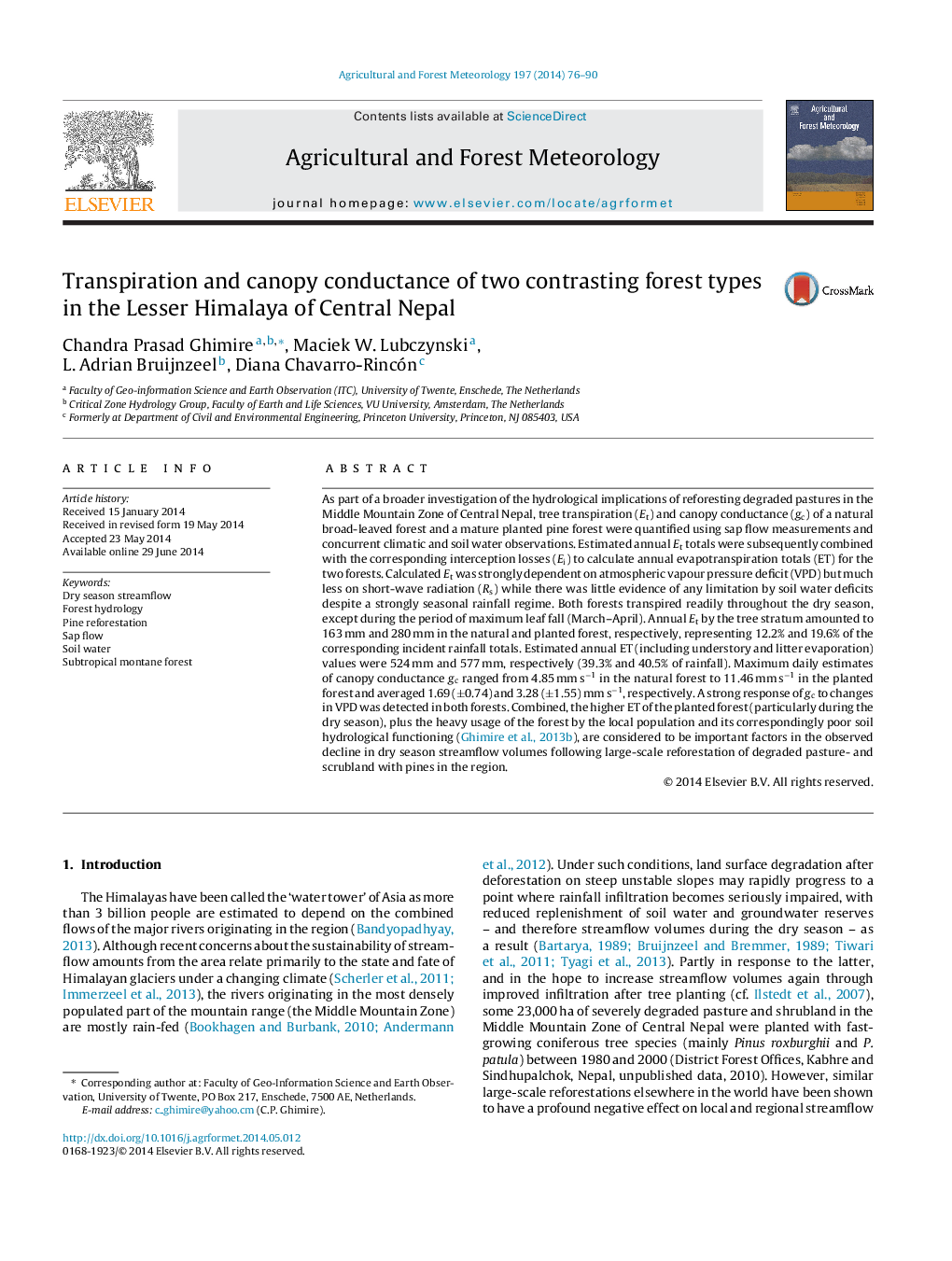| کد مقاله | کد نشریه | سال انتشار | مقاله انگلیسی | نسخه تمام متن |
|---|---|---|---|---|
| 81705 | 158332 | 2014 | 15 صفحه PDF | دانلود رایگان |
• Transpiration was measured in natural and planted forest in the Lesser Himalaya.
• Transpiration of both forests was largely dominated by VPD.
• A strong response of canopy conductance to VPD was found in both forests.
• Transpiration rates in both forests peaked in the dry season.
• The higher ET from planted forest could affect dry season flows.
As part of a broader investigation of the hydrological implications of reforesting degraded pastures in the Middle Mountain Zone of Central Nepal, tree transpiration (Et) and canopy conductance (gc) of a natural broad-leaved forest and a mature planted pine forest were quantified using sap flow measurements and concurrent climatic and soil water observations. Estimated annual Et totals were subsequently combined with the corresponding interception losses (Ei) to calculate annual evapotranspiration totals (ET) for the two forests. Calculated Et was strongly dependent on atmospheric vapour pressure deficit (VPD) but much less on short-wave radiation (Rs) while there was little evidence of any limitation by soil water deficits despite a strongly seasonal rainfall regime. Both forests transpired readily throughout the dry season, except during the period of maximum leaf fall (March–April). Annual Et by the tree stratum amounted to 163 mm and 280 mm in the natural and planted forest, respectively, representing 12.2% and 19.6% of the corresponding incident rainfall totals. Estimated annual ET (including understory and litter evaporation) values were 524 mm and 577 mm, respectively (39.3% and 40.5% of rainfall). Maximum daily estimates of canopy conductance gc ranged from 4.85 mm s−1 in the natural forest to 11.46 mm s−1 in the planted forest and averaged 1.69 (±0.74) and 3.28 (±1.55) mm s−1, respectively. A strong response of gc to changes in VPD was detected in both forests. Combined, the higher ET of the planted forest (particularly during the dry season), plus the heavy usage of the forest by the local population and its correspondingly poor soil hydrological functioning (Ghimire et al., 2013b), are considered to be important factors in the observed decline in dry season streamflow volumes following large-scale reforestation of degraded pasture- and scrubland with pines in the region.
Journal: Agricultural and Forest Meteorology - Volume 197, 15 October 2014, Pages 76–90
